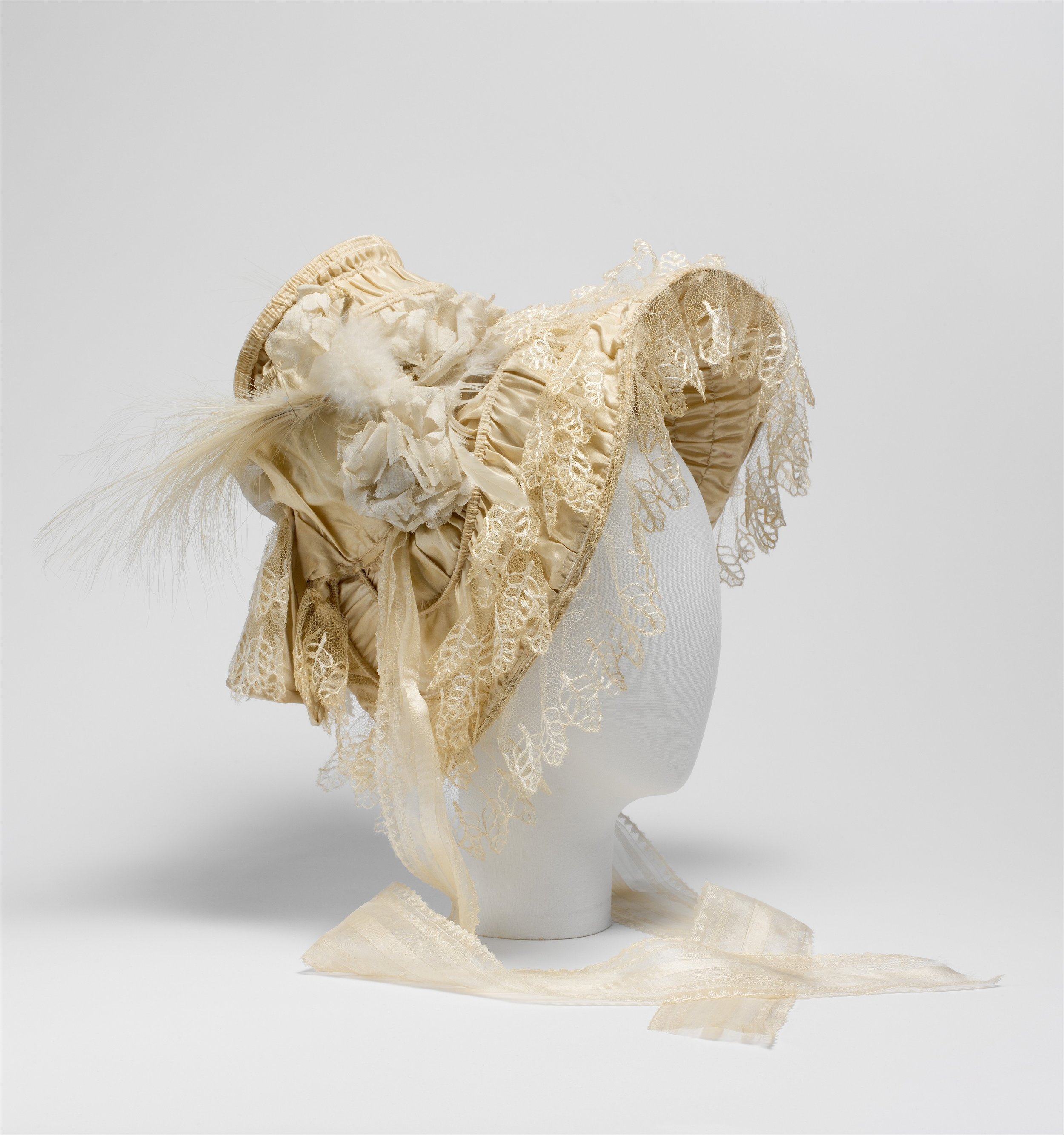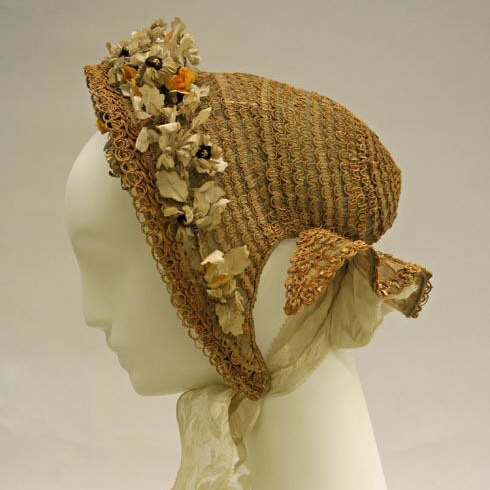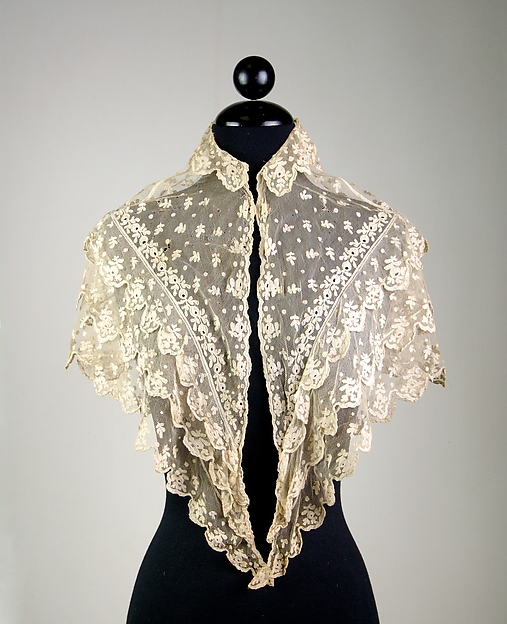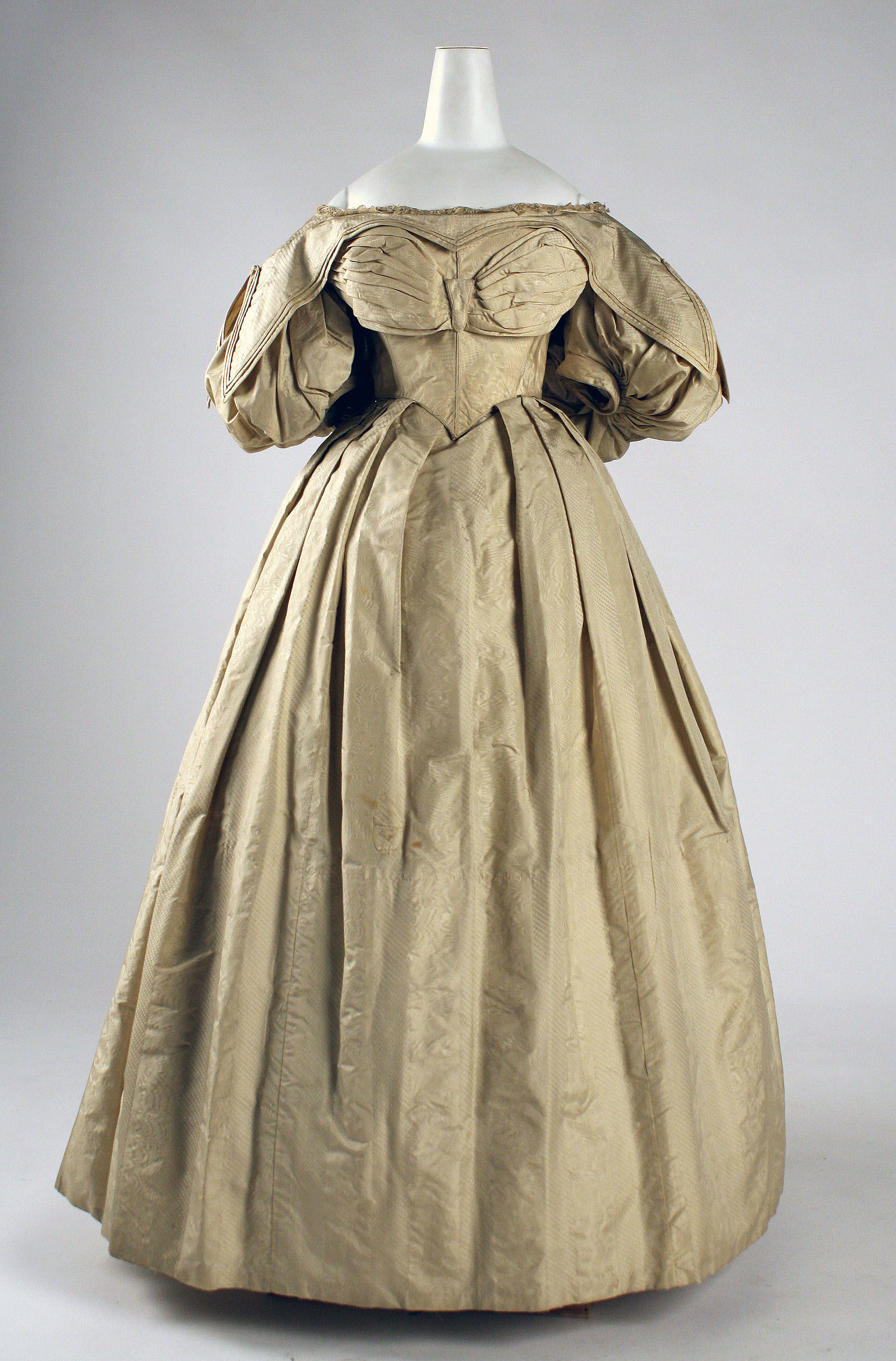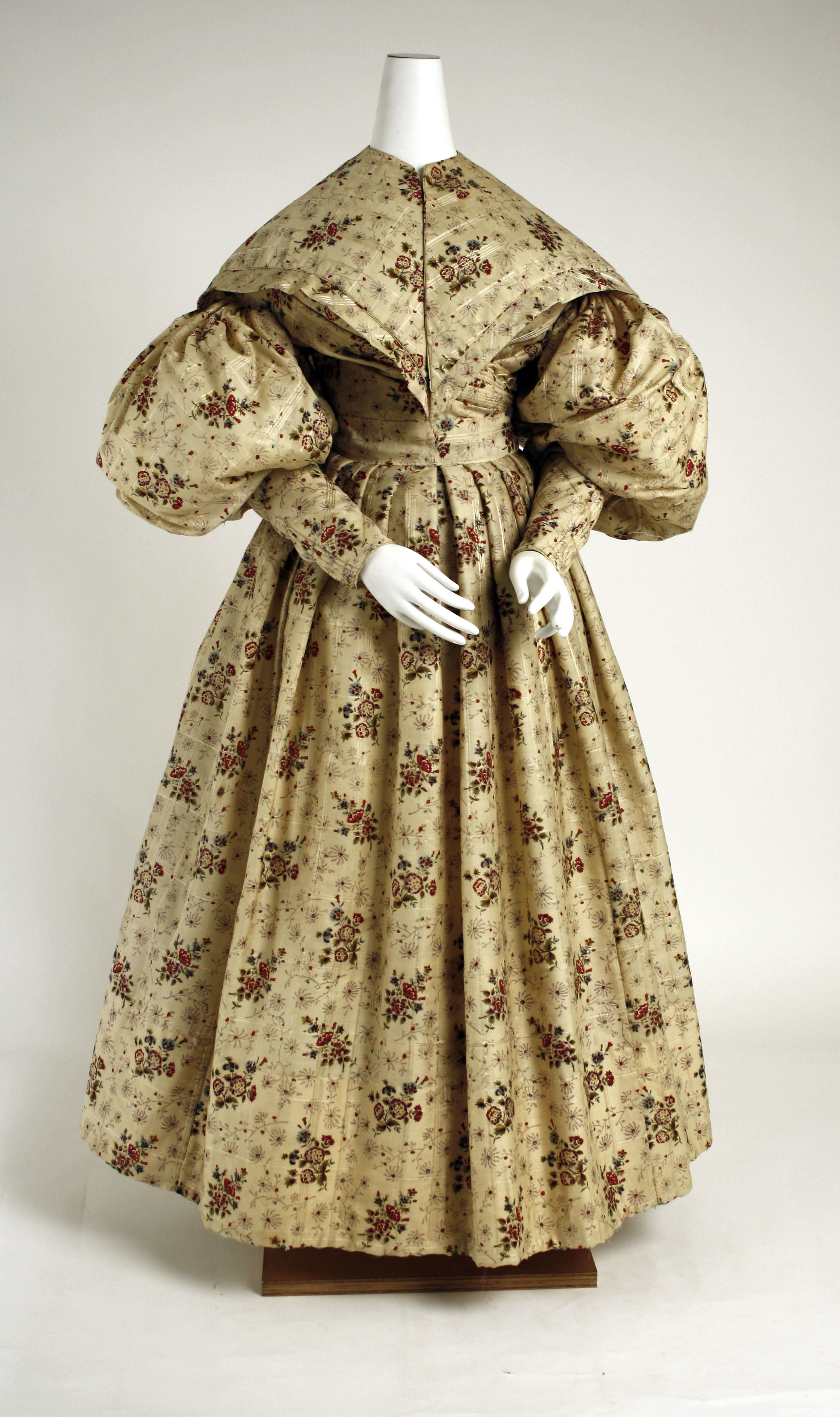Woman with a Green Book (Louisa Gallond Cook) | 1838 | Erastus Salisbury Field
On display at the Art Institute of Chicago in American Gallery 227 (Folk Art)
I chose this painting by Erastus Salisbury Field, entitled Woman with a Green Book, just so I could talk about 1830s fashion, which I think is fascinating! And also if I had a portrait of myself commissioned I'd want it to be holding a book, so I can relate to Louisa Gallond Cook. Let's start at the top with her bonnet.
#FashionHistorybyDrHasty
Bonnet
Headpieces from the 1830s ranged from the ornate to the simple, and everything in between. Bonnets (identified as such by the tie beneath the chin) were the most popular form of head wear and served both functional and aesthetic purposes. They protected a woman's head form the elements such as sun, rain, and wind but they were also status pieces worn to show off their good taste at social events such as dinner parties.
Sloping Neckline
The most distinctive design detail of the 1830s is the sloping neckline accentuated by the wide shoulders creating a large triangle shape from the woman's neck to her elbows. This wide torso "was achieved through a combination of underpinnings. Stays were boned, which provided pressure on the waist, and had bust gussets, which pushed the volume of the bosom upward, and featured shoulder straps, which held the shoulders down and away from the neck." - Jessica Glasscock, The Costume Institute, The Metropolitan Museum of Art
Pelerine
The white shawl or scarf piece on Louisa's shoulders is known as a pelerine. Pelerines were used for modesty, covering up the wide, open neckline that exposed the shoulders. Many of them were white, but some matched the dress as seen above. They were made of a wide variety of materials such as muslin, lace, silk, cotton, and even feathers.
Gigot Sleeve
There is no shortage of volume in an 1830s sleeve, known as a gigot sleeve or leg o’mutton sleeve. Large sleeves began to emerge in the 1820s but hit their peak in the 1830s. The volume and shape was created with sleeve supports made of down or cotton and shaped with whalebone. The large sleeve contributed to the fashionable sloped shoulder look by starting at the top of the arm rather than the top of the shoulder. The volume was isolated to the upper arm, ending with a fitted sleeve from elbow to wrist.




